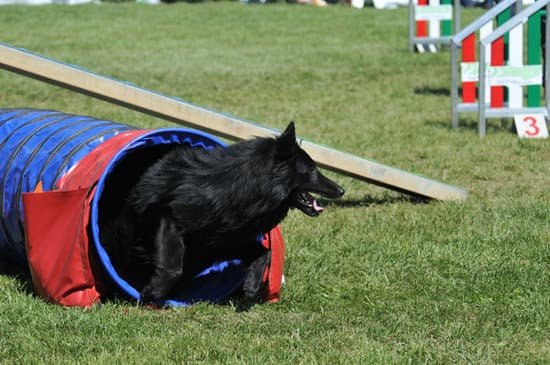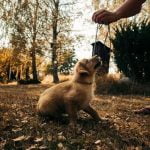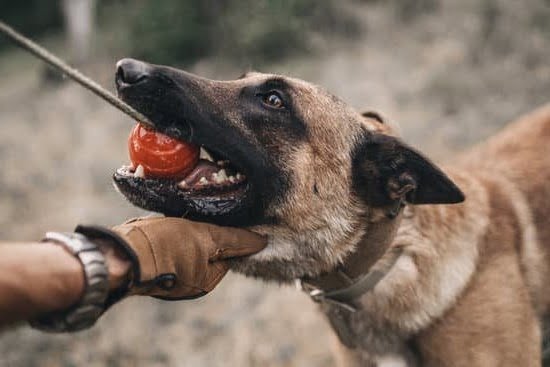Herding dogs, such as Border Collies and Australian Shepherds, are known for their instinct to nip as part of their herding behavior. Understanding this innate drive is crucial when training these intelligent and energetic breeds. In this article, we will delve into how to train a herding dog not to nip, focusing on effective techniques to redirect this behavior positively.
One key aspect of training a herding dog not to nip is grasping the root cause behind this behavior. Herding dogs have a strong prey drive and nipping is a way for them to control and direct movement. By comprehending this instinctual behavior, we can tailor our training methods to address it appropriately. With the right approach, nipping behavior can be redirected into more desirable outlets.
Proper socialization plays a significant role in shaping the behavior of herding dogs. Exposing them to various environments, people, and animals from a young age helps them develop positive social skills and learn appropriate boundaries. Building confidence and trust through socialization experiences can contribute to reducing nipping tendencies in herding dogs.
The Importance of Proper Socialization for Herding Dogs
Proper socialization is essential for herding dogs to learn appropriate behavior around other animals, people, and in various environments. Since herding dogs have strong instincts to nip or herd, early socialization can help them understand boundaries and interactions with other beings. Socializing a herding dog involves exposing them to different situations gradually, ensuring positive experiences that help shape their behavior positively.
One way to socialize herding dogs effectively is by introducing them to various people, animals, sights, sounds, and smells from a young age. This exposure helps them build confidence, reduce anxiety, and learn proper manners around others. Additionally, enrolling your herding dog in obedience classes or training sessions can provide controlled environments for social interaction while learning valuable skills.
When socializing your herding dog, it is important to remain patient and consistent with training methods. Positive reinforcement techniques such as praises, treats, or toys can encourage good behavior and reinforce socialization efforts. By rewarding desired behaviors and gently correcting inappropriate ones, you can guide your herding dog towards understanding how to interact without nipping or displaying unwanted behaviors.
| Socialization Tips for Herding Dogs | Benefits of Proper Socialization |
|---|---|
| Expose your herding dog to different environments regularly | Reduces anxiety and builds confidence |
| Introduce them to a variety of people and animals | Helps in learning proper manners and etiquette |
| Use positive reinforcement techniques during social interactions | Encourages good behavior and reinforces learning |
Setting Clear Boundaries and Expectations for Your Herding Dog
Herding dogs have a strong instinct to nip, which is deeply rooted in their genetic makeup as working breeds. To effectively train a herding dog not to nip, it’s essential to understand the reasons behind this behavior and establish clear boundaries and expectations. By setting consistent guidelines and teaching appropriate behaviors, you can help your herding dog overcome this natural inclination.
Establishing Clear Communication
One of the first steps in training a herding dog not to nip is establishing clear communication. Dogs thrive on consistency and structure, so it’s important to communicate your expectations effectively. Use positive reinforcement techniques to reward desired behaviors such as gentle play or following commands without nipping. Avoid any form of punishment that may confuse or escalate the behavior.
Creating Boundaries
Setting boundaries is crucial when training a herding dog not to nip. Determine what actions are considered unacceptable, such as biting clothing or skin, and consistently redirect your dog’s attention towards more appropriate activities. Provide plenty of chew toys and interactive games to keep your herding dog mentally stimulated and prevent boredom-induced nipping.
Consistent Training and Supervision
Consistency is key when setting boundaries and expectations for your herding dog. Make sure every member of the household follows the same rules to avoid confusion. Supervise interactions between your dog and other family members or pets, stepping in immediately if nipping occurs. By maintaining a structured environment and providing positive reinforcement for good behavior, you can effectively train your herding dog not to nip.
Positive Reinforcement Training Techniques
Herding dogs, like Border Collies and Australian Shepherds, have a natural instinct to nip at the heels of animals to herd them. While this behavior is innate, it can become problematic when directed towards humans or other pets. To train a herding dog not to nip, positive reinforcement training techniques can be highly effective. By teaching your herding dog alternative behaviors and rewarding them for making the right choices, you can redirect their instincts in a positive way.
Using Clicker Training to Redirect Behavior
Clicker training is a popular method that involves using a clicker to signal desired behavior followed by a reward. When your herding dog displays nipping behavior, you can use the clicker to mark the moment they stop nipping and reward them with treats or praise. This teaches them that not nipping leads to positive outcomes, encouraging them to repeat the desired behavior.
Teaching Calmness Through Relaxation Techniques
Another effective approach is teaching your herding dog relaxation techniques as an alternative to nipping. By practicing activities such as “down-stays” or “go-to-place,” you can help your dog learn impulse control and calmness in moments of excitement or arousal. Rewarding them for staying relaxed and focused instead of resorting to nipping will reinforce these behaviors over time.
Engaging Your Herding Dog in Interactive Play
Interactive play sessions are essential for providing mental stimulation and physical exercise for herding dogs. Engaging your dog in games like fetch, tug-of-war, or puzzle toys not only redirects their energy in a positive way but also strengthens the bond between you and your pet. By incorporating playtime into your daily routine, you can prevent boredom-induced nipping and provide outlets for their natural instincts in a controlled environment.
Redirecting Your Herding Dog’s Energy
Herding dogs are known for their instinctual behavior to nip, a trait that stems from their natural herding instincts. To effectively train a herding dog not to nip, it is important to redirect their energy towards engaging activities that stimulate both their mind and body. By providing them with appropriate outlets for their high energy levels, you can help prevent nipping behavior and promote positive interactions with your dog.
Here are some engaging activities that can help redirect your herding dog’s energy in a positive way:
- Agility Training: Herding dogs thrive on mental and physical challenges, making agility training a great option to channel their energy. Set up an agility course in your backyard or enroll in a local class to keep your dog mentally stimulated and physically active.
- Interactive Toys: Provide your herding dog with interactive toys that require problem-solving skills and physical dexterity. Puzzle toys, treat dispensers, and tug-of-war games can keep them entertained while reducing the urge to nip.
- Hiking or Running: Take your herding dog on regular hikes or runs to burn off excess energy. These outdoor activities allow them to explore new environments and engage in natural behaviors like sniffing and chasing, which can help prevent nipping behavior at home.
By incorporating these engaging activities into your daily routine, you can help prevent nipping behavior in your herding dog while strengthening the bond between you and your pet. Remember that consistency is key when training a herding dog, so make sure to provide plenty of mental stimulation and physical exercise to keep them happy and well-behaved.
Consistency Is Key
When it comes to training a herding dog not to nip, consistency is crucial. Herding dogs are known for their high energy levels and natural instincts, so it’s essential to establish a routine that reinforces desired behaviors and discourages nipping.
One effective way to do this is through regular training sessions that focus on teaching alternative behaviors. By consistently practicing these exercises, you can help your herding dog learn appropriate ways to interact with their surroundings without resorting to nipping.
Incorporating daily exercise and mental stimulation into your herding dog’s routine can also contribute to reducing nipping behavior. These activities not only help burn off excess energy but also provide an outlet for their herding instincts.
Engaging in activities such as obedience training, agility courses, or interactive games can channel your dog’s energy in a positive direction and reinforce the training you’ve been working on. This helps prevent boredom, which is often a common trigger for nipping behavior in herding dogs.
Another crucial aspect of establishing a training routine for your herding dog is ensuring that all family members or caregivers are on the same page. Consistency in commands, expectations, and responses to nipping behavior is key to avoiding confusion for your dog.
When everyone involved follows the same training guidelines and techniques, it creates a cohesive environment that supports your herding dog’s learning process. This unified approach reinforces boundaries and routines, leading to more effective training outcomes and ultimately reducing the likelihood of nipping incidents.
| Training Routine Tips | Benefits |
|---|---|
| Incorporate daily exercise and mental stimulation | Reduces excess energy and boredom |
| Ensure consistency among family members | Avoids confusion and reinforces boundaries |
Addressing Nipping Behavior in Different Age Groups of Herding Dogs
Nipping behavior is a common instinct among herding dogs, regardless of their age. However, the approach to addressing this behavior may vary depending on the age group of the dog. For younger herding puppies, nipping is often a form of exploration and play. It is essential to teach them appropriate ways to interact with humans and other animals from an early age.
When dealing with nipping behavior in young herding puppies, it is crucial to provide plenty of socialization opportunities. This includes exposing them to different environments, people, and animals in a positive manner. This will help them learn proper social skills and reduce the likelihood of excessive nipping as they grow older.
On the other hand, addressing nipping behavior in older herding dogs may require a different approach. Older dogs may have established habits that are harder to break, but with patience and consistent training, it is still possible to teach them not to nip.
Using positive reinforcement techniques such as rewards for good behavior can be effective in redirecting their nipping tendencies towards more appropriate activities. Remember that each dog is unique, so it may take time and effort to find what works best for your individual pet.
Overall, regardless of the age group of your herding dog, consistency in training is crucial when addressing nipping behavior. By understanding the underlying reasons for nipping and implementing appropriate training techniques tailored to their age and temperament, you can help your herding dog learn how to interact with others without resorting to nipping behaviors.
If you are struggling with training your herding dog not all nip on your own, do not hesitate to seek professional help from a qualified trainer who specializes in working with herding breeds.
Seeking Professional Help
Training a herding dog not to nip can be a challenging task, especially if the behavior persists despite your best efforts. In some cases, seeking professional help from a certified dog trainer may be necessary to address the root cause of the nipping behavior. A trainer with experience working with herding breeds can provide valuable insights and guidance on how to effectively modify your dog’s behavior.
If your herding dog continues to exhibit nipping behavior despite consistent training and redirection efforts, it may be time to consider consulting a qualified trainer. Trainers who specialize in working with herding dogs understand the unique needs and instincts of these breeds, making them well-equipped to address nipping issues effectively. They can assess the situation, identify any underlying triggers for the behavior, and develop a personalized training plan tailored to your dog’s specific needs.
Professional trainers can also provide you with valuable tools and techniques for managing nipping behavior in your herding dog. They may recommend additional training exercises, socialization opportunities, or enrichment activities to help redirect your dog’s focus and energy in more appropriate ways. By working closely with a trainer, you can gain valuable insights on how to train a herding dog not to nip and ultimately foster a stronger bond with your canine companion.
Conclusion
As a herding dog owner, understanding the instinctive behavior of your furry companion is crucial to effectively address nipping issues. By recognizing their natural herding instincts and tendencies to nip, you can implement appropriate training techniques to redirect this behavior. Proper socialization plays a significant role in shaping your herding dog’s behavior, so introducing them to diverse environments and experiences from a young age can help reduce nipping tendencies.
Setting clear boundaries and expectations for your herding dog is essential in preventing nipping incidents. Consistency in training methods, along with positive reinforcement techniques, will reinforce desired behaviors and discourage nipping. Engaging in activities that stimulate both their mind and body can also redirect their energy away from nipping towards more constructive outlets.
In conclusion, training a herding dog not to nip requires patience, consistency, and dedication. Celebrate the progress made with your well-trained companion and focus on building a strong bond based on trust and respect. Remember that seeking guidance from a professional trainer when needed can provide valuable insights and support in addressing nipping issues effectively. With the right approach and commitment, you can enjoy a harmonious relationship with your herding dog built on mutual understanding and cooperation.
Frequently Asked Questions
Is It Normal for Herding Dogs to Nip?
Herding dogs nipping is a common behavior due to their instinct to herd livestock by nipping at their heels. While it is normal, it’s essential to address it through proper training and redirection to prevent any issues.
How Do I Get My Herding Dog to Stop Biting?
To stop your herding dog from biting, consistent training and positive reinforcement are key. Providing appropriate chew toys, teaching the “leave it” command, and redirecting their attention towards acceptable behaviors can help deter biting tendencies effectively.
How Do You Discipline a Herding Dog?
Discipline for a herding dog should focus on positive reinforcement rather than punishment. Using rewards for good behavior, consistent training, setting clear boundaries, and redirecting negative behaviors towards more appropriate actions help in disciplining them effectively. Consistency is crucial in shaping their behavior positively over time.

Welcome to the blog! I am a professional dog trainer and have been working with dogs for many years. In this blog, I will be discussing various topics related to dog training, including tips, tricks, and advice. I hope you find this information helpful and informative. Thanks for reading!





